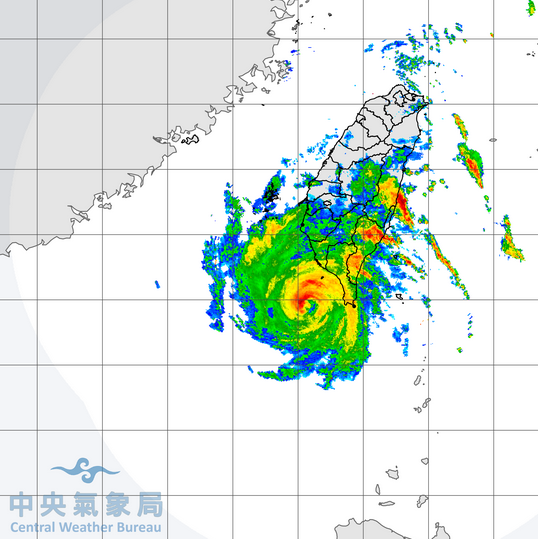Typhoon In-Fa churned southeast of Ishigaki, Japan on Thursday. At 11:00 a.m. EDT on Thursday the center of Typhoon In-Fa was located at latitude 23.7°N and longitude 125.8°E which put it about 120 miles (195 km) southeast of Ishigaki, Japan. In-Fa was moving toward the northwest at 2 m.p.h. (3 km/h). The maximum sustained wind speed was 100 m.p.h. (160 km/h) and there were wind gusts to 120 m.p.h. (195 km/h). The minimum surface pressure was 957 mb.
Typhoon In-Fa went through an eyewall replacement cycle as it moved slowly toward the southwestern Ryukyu Islands on Thursday. The inner end of an rainband wrapped completely around the original eye and eyewall. Two concentric eyewalls existed simultaneously for a time on Wednesday. Low level convergence became concentrated in the newer, outer eyewall and the inner eyewall dissipated. The eyewall replacement cycle left a much larger eye with a diameter of 65 miles (105 km) at the center of Typhoon In-Fa. Bands of showers and thunderstorms were revolving around the new, larger eye. Storms near the eye generated upper level divergence that pumped mass away from the typhoon.
The circulation around Typhoon In-Fa was large. Winds to typhoon force extended out 70 miles (110 km) from the center of In-Fa. Winds to tropical storm force extended out 230 miles (370 km) from the center of circulation. The Hurricane Intensity Index (HII) for Typhoon In-Fa was 16.5. The Hurricane Size Index (HSI) was 27.4 and the Hurricane Wind Intensity Size Index (HWISI) was 43.9 .
Typhoon In-Fa will move through an environment favorable for intensification during the next 24 hours. In-Fa will move over water where the Sea Surface Temperatures are near 29°C. It will move through a region where the upper level winds are weak and there will be little vertical wind shear. Typhoon In-Fa has moved little during the past 12 hours and it has mixed cooler water to the surface. Once In-Fa starts to move a little faster, the core of the typhoon will move back over warmer water. Typhoon In-Fa is likely to strengthen during the next 24 hours and it could intensify to the equivalent of a major hurricane.
Typhoon In-Fa will move around the southwestern part of a high pressure system over the Western North Pacific Ocean during the next 36 hours. The high will steer In-Fa toward the northwest. On its anticipated track the center of Typhoon In-Fa will be near the southwestern Ryukyu Islands in 18 hours. In-Fa will be capable of causing widespread serious damage. It will also cause a significant storm surge. Typhoon In-Fa will drop heavy rain and flash floods are likely. The core of In-Fa could be northeast of Taiwan in 36 hours. In-Fa will also drop heavy rain on parts of northern Taiwan and flash floods are likely there as well.
Elsewhere, Tropical Depression Cempaka continued to meander over southern China. At 11:00 a.m. EDT on Thursday the center of Tropical Depression Cempaka was located at latitude 21.9°N and longitude 107.8°E which put it about 25 miles (40 km) north of Mong Cai, Vietnam. Cempaka was moving toward the northwest at 7 m.p.h. (11 km/h). The maximum sustained wind speed was 30 m.p.h. (50 km/h) and there were wind gusts to 40 m.p.h. (65 km/h). The minimum surface pressure was 1003 mb.

